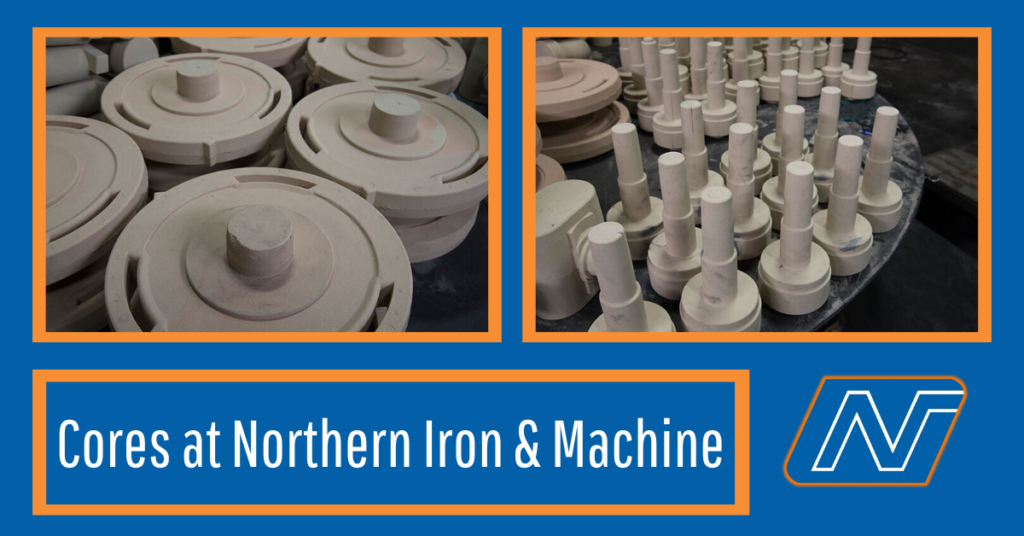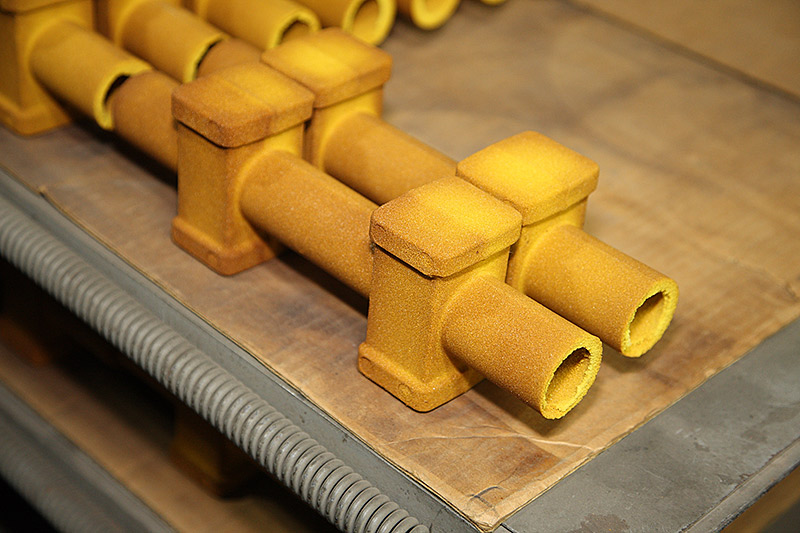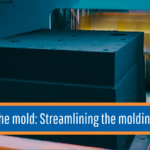
Cores define the internal space inside iron castings while the mold defines the outside shape of the casting. Cores are used to shape the inside of castings as well as any parts that can’t be shaped by the pattern. Cores allow more intricate and detailed designs for castings.
The cores we produce
2 Redford HS 16 Shell
1 Redford HS 22 Shell
1 B+P – ABC6 Phenolic Urethane
1 IMF – Disco 3200 Phenolic Urethane
Our processes
Northern Iron & Machine produces cores using two processes. The phenolic urethane process is performed on an IMF Disco 3500 and a Simpson ABC 6 system. The process to create our shell cores are produced on Redford shell machine systems.
Both processes require the use of a core box die. The die creates a negative impression of the desired core shape. Our cores are primarily made of silica sand, similar to how molds are made.
Using phenolic urethane
But unlike molds, when using the phenolic urethane process for making cores, a three-part binder is mixed with sand and blown into the core box via compressed air. This is a no-bake process that utilizes a catalyst reaction to produce an urethan bond that cures under ambient conditions without using heat, gas, or vapor.

Image source: https://www.foundrymag.com/molds-cores/media-gallery/21153249/phenolic-urethane-cold-box-environmental-advantages-ha-international?id=21153249&slide=5
By comparison, shell cores are produced somewhat the same as phenolic urethane cores, but the sand is mixed with a resin that reacts to heat. During the manufacture of shell cores, the die is heated, and the sand mixture is blown into the core box. The heat causes the resin to harden and the core to cure.

Image source: https://www.francismanufacturing.com/capabilities/casting-cores/
After a core has been produced, it may be coated with a core wash and then sent through a forced air oven for curing. The core wash process improves the surface finish of the final casting while preventing undesirable iron penetration into the mold.
During mold production, the cores are set in place prior to setting the two mold halves (cope and drag) that are closed. To learn more about our molding process, visit the “How we do it” section on our website.






